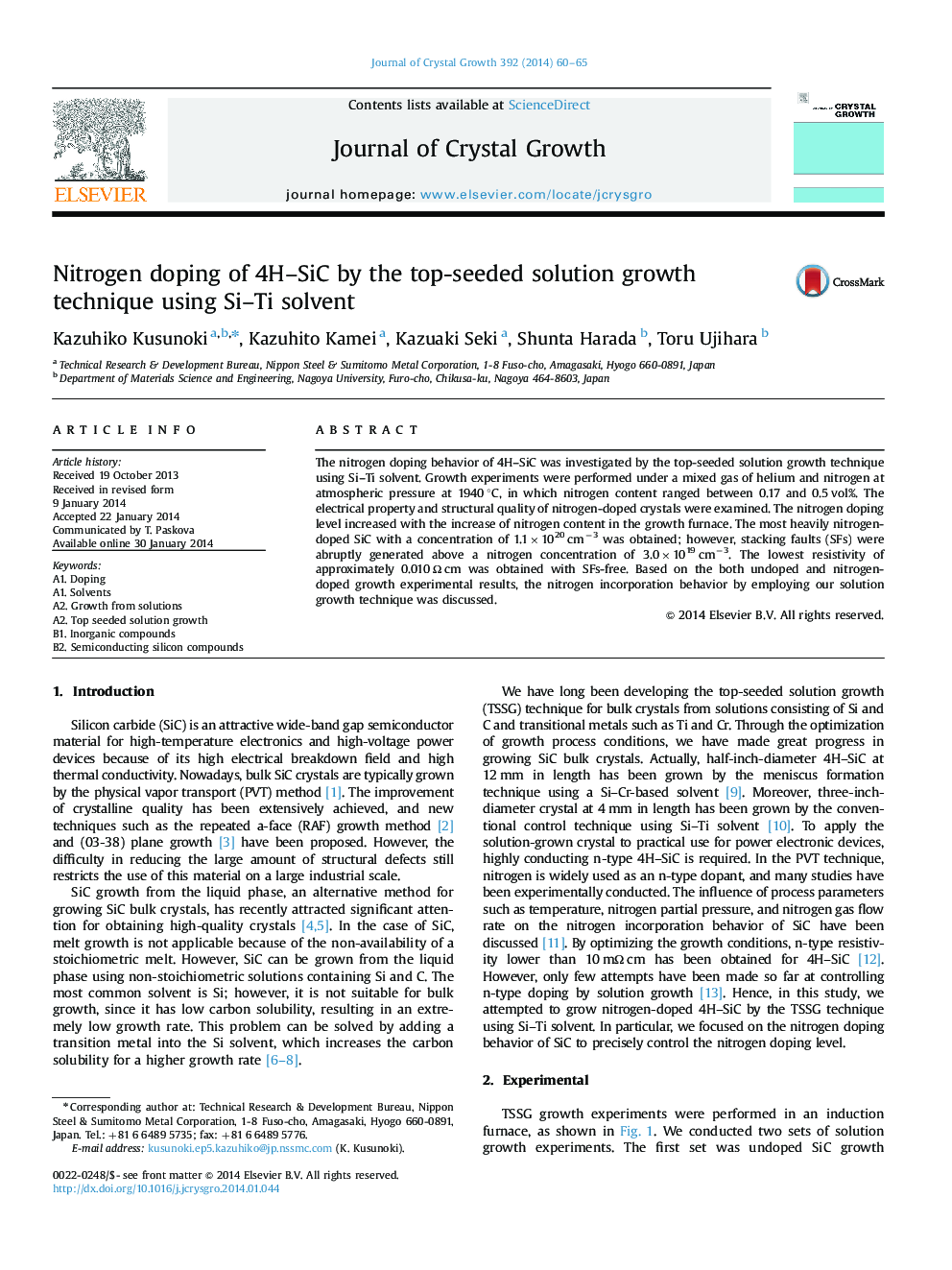| Article ID | Journal | Published Year | Pages | File Type |
|---|---|---|---|---|
| 1790484 | Journal of Crystal Growth | 2014 | 6 Pages |
•Nitrogen doping behavior of 4H–SiC was investigated by the top-seeded solution growth technique.•Suppression of the background nitrogen level is achieved by the baking procedure.•Doping concentration could be controlled by changing the nitrogen partial pressure during growth.•Stacking faults were generated when the nitrogen concentration in SiC exceeded 3.0×1019 cm−3.•The lowest resistivity of approximately 0.010 Ω cm was obtained with excellent crystalline quality.
The nitrogen doping behavior of 4H–SiC was investigated by the top-seeded solution growth technique using Si–Ti solvent. Growth experiments were performed under a mixed gas of helium and nitrogen at atmospheric pressure at 1940 °C, in which nitrogen content ranged between 0.17 and 0.5 vol%. The electrical property and structural quality of nitrogen-doped crystals were examined. The nitrogen doping level increased with the increase of nitrogen content in the growth furnace. The most heavily nitrogen-doped SiC with a concentration of 1.1×1020 cm−3 was obtained; however, stacking faults (SFs) were abruptly generated above a nitrogen concentration of 3.0×1019 cm−3. The lowest resistivity of approximately 0.010 Ω cm was obtained with SFs-free. Based on the both undoped and nitrogen-doped growth experimental results, the nitrogen incorporation behavior by employing our solution growth technique was discussed.
